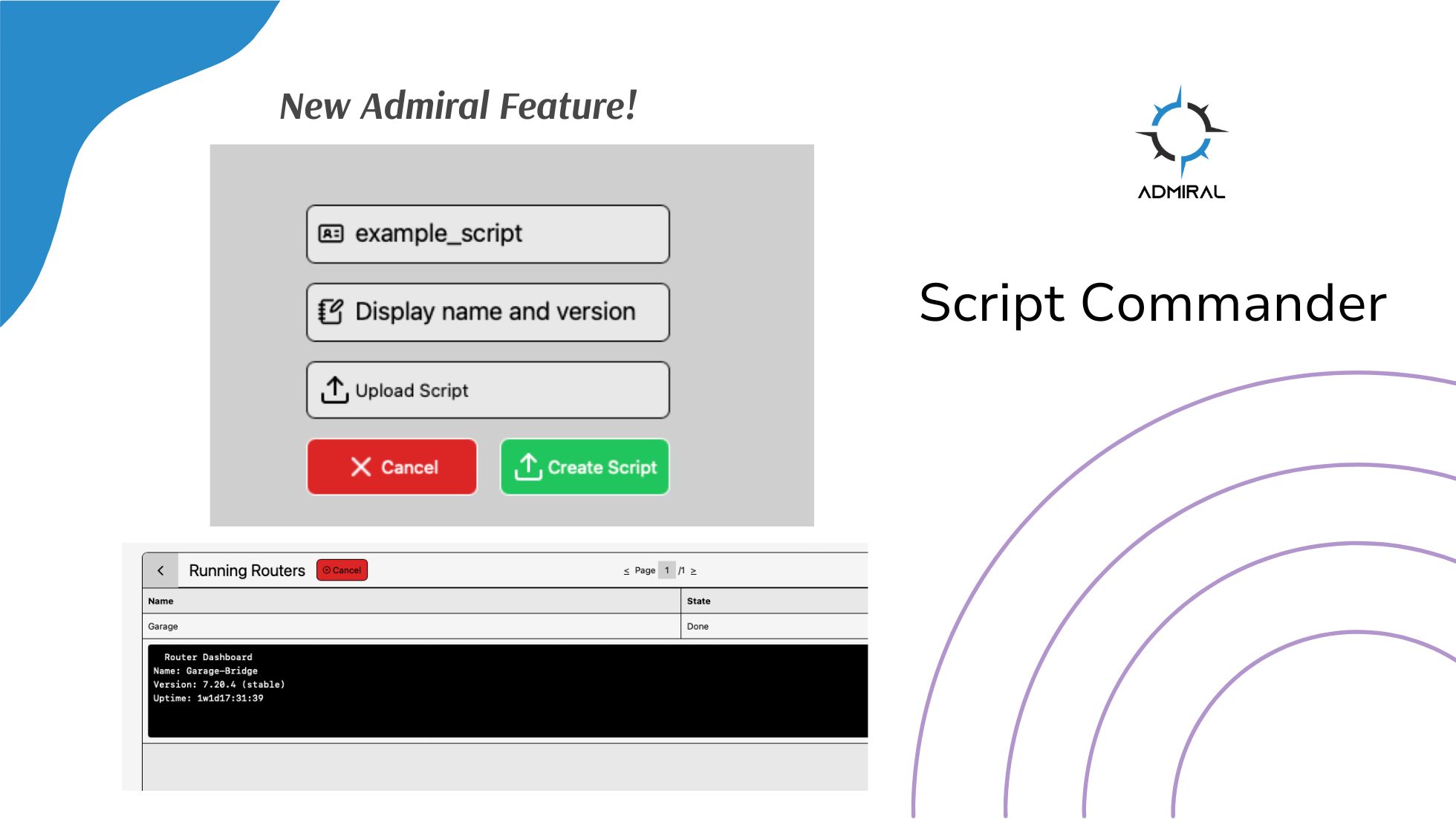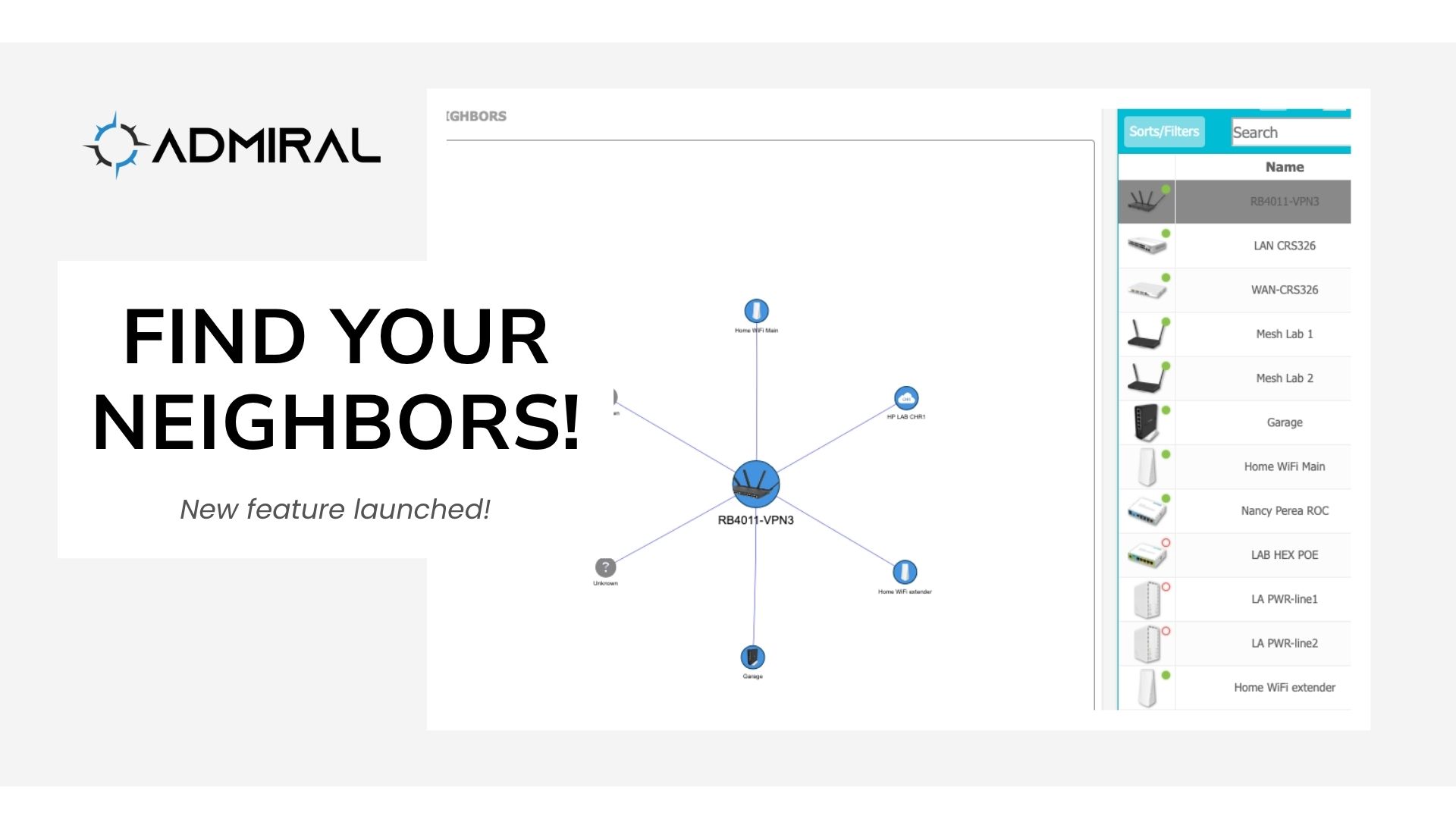Script Commander, is a new feature on Admiral Platform designed to give you better control…

Why Engineers Need Tik Training on MikroTik VxLAN with Dynamic Routing
When Networks Fail — It’s Rarely the Hardware
Your routers aren’t broken — your design is.
Most network failures in MikroTik environments trace back to misconfigurations at the architecture level: MTU mismatches, OSPF errors and misconfigurations, and missing redundancy.
At Admiral, we’ve seen this pattern hundreds of times. The root cause isn’t lack of effort — it’s lack of structured design knowledge. That’s exactly why we created Tik Training: MikroTik VxLAN with Dynamic Routing.
Common Failure Scenarios (That You’ll Fix in This Course)
1. OSPF Downtime and Slow Convergence
Adding redundancy doesn’t guarantee uptime. Without BFD (Bidirectional Forwarding Detection) or properly tuned OSPF costs, failovers can take 40 seconds or more — enough to take down VoIP, streaming, or entire MDU WiFi networks.
In Training: You’ll deploy OSPF with BFD for sub-second failover and learn how to simulate link failures safely in your lab.
2. VxLAN Instability
It works fine in the lab but fails under load? Probably because your underlay routes aren’t stable, your MTUs don’t match, or you didn’t assign loopbacks properly.
In Training: You’ll build a full VxLAN fabric using loopbacks, verify reachability, and troubleshoot common tunnel issues step-by-step.
3. Scaling Failures (“It Works Until It Doesn’t”)
Ad-hoc MikroTik networks grow organically until they collapse under their own weight. Without consistent subnetting, redundancy, and topology planning, performance drops as your network expands.
In Training: You’ll design your lab network from scratch using RFC6598/RFC1918 address planning principles and simulate real-world scaling.
4. MTU Mismatches
VxLAN adds about 50 bytes of encapsulation overhead. If your physical and virtual MTUs aren’t aligned, you’ll see bizarre, intermittent packet loss — the kind that makes customers say, “The Internet feels slow.”
In Training: You’ll learn exactly how to calculate, verify, and test MTU end-to-end — across routers, tunnels, and bridges — so packets flow perfectly.
Why This Training Matters
Your customers expect maximum uptime, reliability and performance.
One small design flaw can cost hours of downtime, lost productivity, and customer churn.
With Tik Training, you’ll:
- Design and deploy scalable VxLAN architectures
- Master redundancy and rapid failover
- Confidently troubleshoot complex network behaviors
- Think like a network architect, not just a router admin
- Best practices and protocol tuning
Course Highlights
- 🧩 6 Weeks of Expert-Led Training
- ⚙️ Hands-On Labs Using Real MikroTik Devices
- 📚 Best Practices for OSPF, BFD, and MTU Management
- 💡 Real-World Case Studies from Admiral Engineers
- 🎥 Weekly Q&A Sessions with Live Lab Reviews
Don’t Miss Out — Enrollment Closes Soon!
Training starts December 15th. Seats are limited. Early bird pricing ends December 2nd,
If you’re serious about becoming the kind of engineer whose networks don’t fail, this is the class for you.
👉 Sign Up for Tik Training: MikroTik VxLAN with Dynamic Routing




